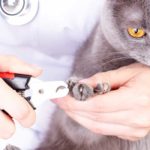A lion cut cat has had all the fur shaved from their body. All that’s left is the fur on their face, head, tail, and feet. Lion cut cats get their … [Read more...]
Best Cat Nail Clippers – Most Effective, Durable And Budget Busting
With the sheer abundance of pet nail trimmers that exist on the market, it can be hard to know which are the best cat nail clippers for your … [Read more...]

